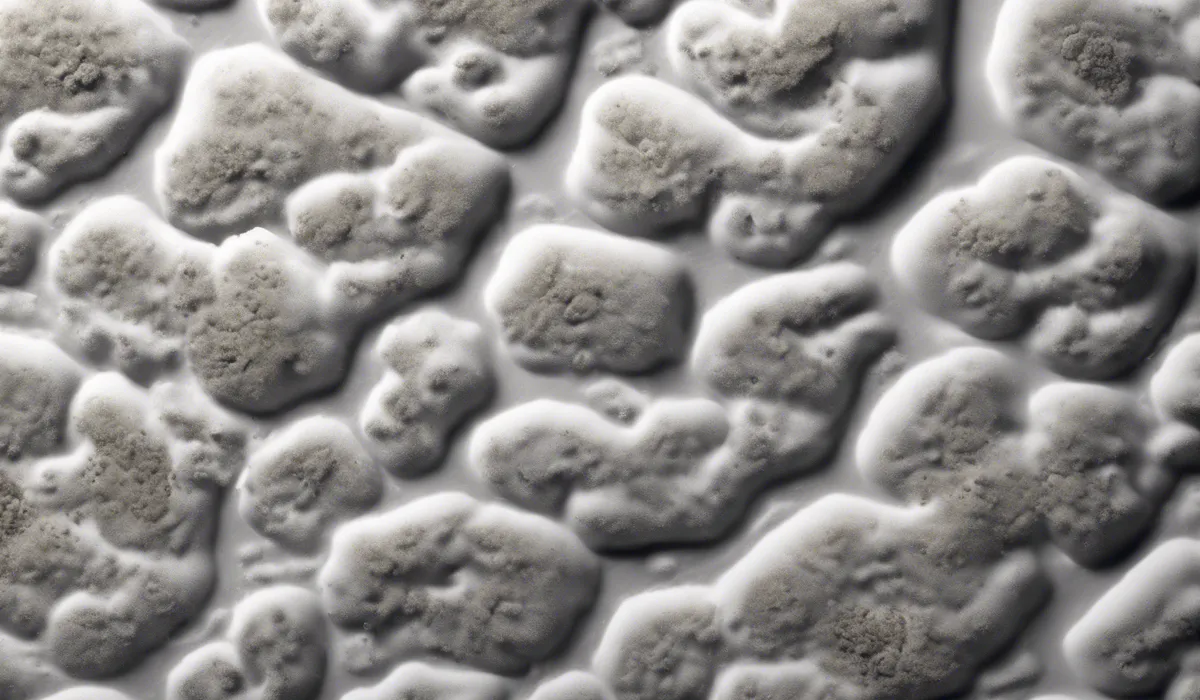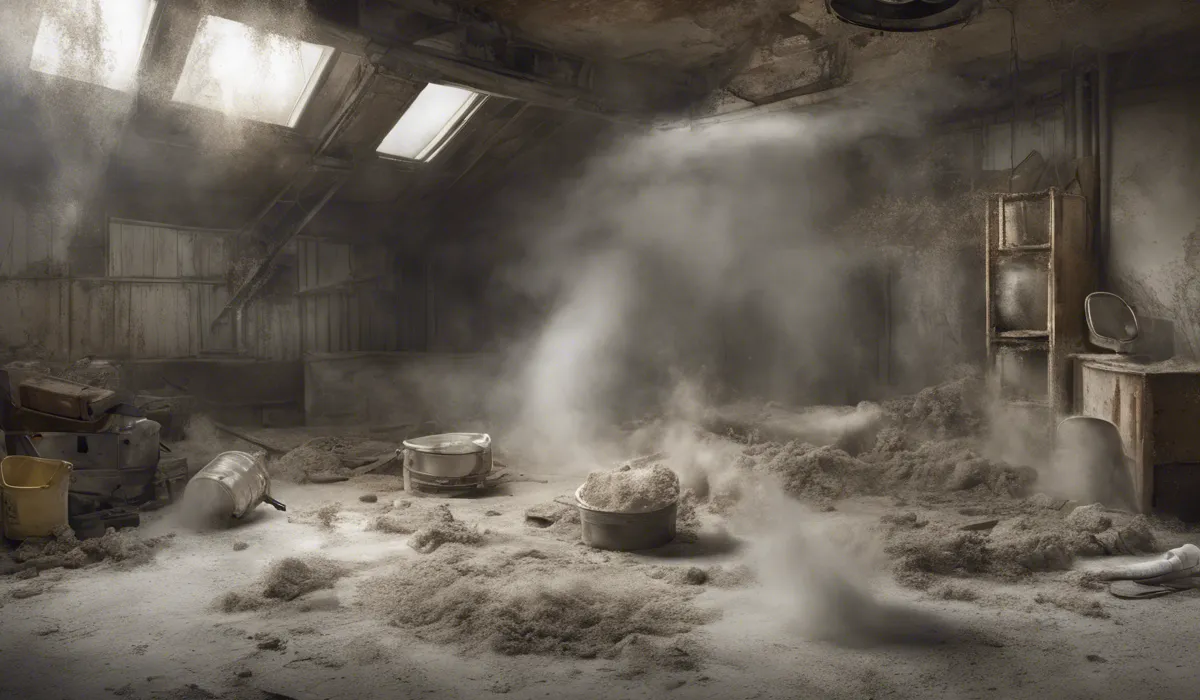Yes, mold can sometimes resemble dust. Mold may appear as a fine, powdery substance, similar to dust, when it begins to grow on surfaces. However, unlike dust, mold tends to have a musty odor and forms in patches with a slight fuzziness, especially in damp environments.
Understanding Mold and Dust: Definitions and Differences

What Exactly Is Mold?
Mold is a type of fungus that can grow indoors and outdoors. It comes in various colors, like black, white, green, or yellow and thrives in moist environments.
Mold reproduces through tiny spores that float through the air, landing on damp spots where they can start to grow.
Common Household Molds
Several molds can be found in homes, with some of the most common being Cladosporium, Penicillium, Aspergillus, and Stachybotrys, which is often called black mold.
These molds can grow on a variety of surfaces such as walls, ceilings, and floors, particularly in areas where moisture levels are high.
Conditions for Mold Growth
Mold needs moisture, warmth, and food to grow. It often appears in bathrooms, kitchens, basements, or around leaks in roofs, windows, or pipes.
Materials like paper, cardboard, ceiling tiles, and wood are excellent food sources for mold when they become damp or water-damaged.
Characteristics of Household Dust
Household dust is a mix of tiny particles that come from various sources. It can include dead skin cells, pet dander, insect waste, pollen, fabric fibers, and more. Dust accumulates on surfaces and is often stirred up when cleaning or through air currents.
Appearance and Texture: Mold vs. Dust
While mold can resemble dust due to its fine, powdery nature, there are clear differences. Mold tends to show up in patches and can look fuzzy or slimy, while dust is more evenly dispersed and lacks a defined texture. Mold also usually comes with a musty odor, unlike dust.
Identifying Mold vs. Dust in Your Home

Visual Differences Between Mold and Dust
Mold and dust can be told apart by their color and patterns. Mold comes in distinct hues and forms irregular patches.
Dust, on the other hand, tends to be a uniform gray shade and spreads out thinly over surfaces.
Where Does Mold Grow?
Mold favors damp, warm areas like bathrooms and basements, while dust settles on all indoor surfaces, regardless of moisture levels. Look for mold in places where water damage has occurred, or humidity is high.
Texture and Consistency
Mold often feels slimy or fuzzy due to its spores and filaments, whereas dust is fine and feels like powder. If you touch a moldy area, it might feel damp, which is not the case with dust.
Health Effects of Mold and Dust
Both mold and dust can cause allergic reactions like sneezing, coughing, and itchy eyes. However, mold exposure can lead to more severe health issues, particularly for people with respiratory conditions or weakened immune systems.
How to Test for Mold?
If you suspect mold but are not sure, you can use a DIY mold test kit available at most hardware stores.
For a more thorough assessment, consider hiring a professional to inspect and test your home.
Prevention and Remediation Strategies

Preventing Mold and Dust Buildup
To keep mold and dust at bay, control humidity levels by using dehumidifiers and ensuring good ventilation.
Clean regularly to reduce dust, and fix leaks promptly to avoid creating moist environments for mold.
Cleaning Dust Safely
Use damp cloths or special dusters that trap dust to clean surfaces. Vacuum regularly with a HEPA filter to capture the smallest particles. Aim to dust at least once a week and vacuum two times a week.
Mold Cleaning Guidelines
If you find a small area of mold, you can often clean it with household products like vinegar or baking soda. For larger infestations, it’s best to call professionals who have the right equipment and expertise.
Personal Protection During Cleanup
When cleaning mold, wear protective gear such as gloves, goggles, and a mask. This will help prevent you from breathing in mold spores or having them contact your skin.
Ensuring Complete Mold Removal
After cleaning mold, keep the area dry to prevent it from returning. Use paint or other sealants designed to resist mold on surfaces that have been affected. Regularly check for signs of moisture or new growth.
FAQs About Can Mold Look Like Dust
Can mold be confused with dust on surfaces?
Yes, mold can be confused with dust as it may appear as a fine, powdery substance similar to dust when it starts to grow.
What are the visual differences between mold and dust?
Mold differs from dust by forming in patches with a slight fuzziness and tends to have a musty odor, unlike dust.
Does mold have a distinctive smell compared to dust?
Yes, mold has a distinctive musty odor, which is not a characteristic of dust.
Where is mold most likely to grow and look like dust?
Mold is most likely to grow and resemble dust in damp environments, where there’s enough moisture for it to thrive.
How can I tell if a powdery substance is mold or dust?
You can differentiate mold from dust by checking for a musty odor, the presence of patchy and fuzzy growth, and its propensity to appear in moist areas.
Final Thoughts
Mold can sometimes mimic the appearance of dust, presenting as a fine, powdery substance on various surfaces.
It is distinguishable by a musty smell and tends to grow in fuzzy patches, particularly in moist areas. Unlike inert dust particles, mold requires specific conditions to thrive and may pose health risks.
